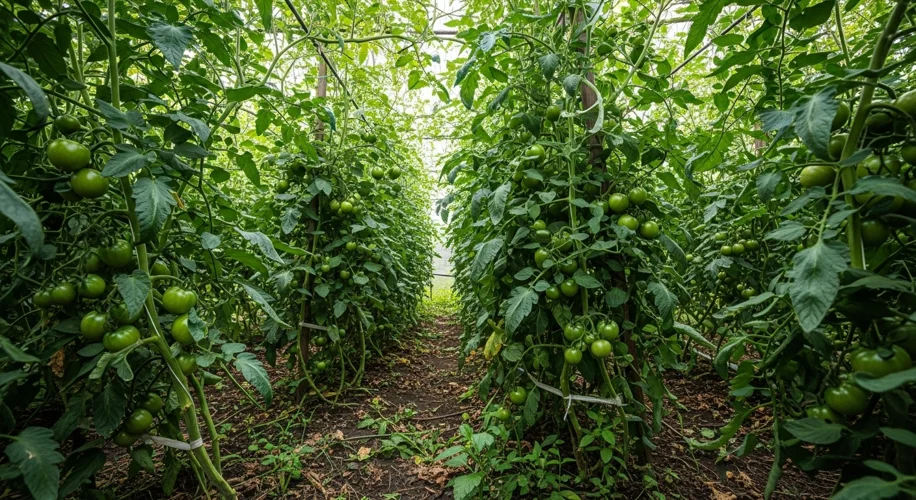It’s late July here in the garden, and the tomato plants are… well, they’re something else this year. Specifically, my Romas. You know, those lovely, paste tomatoes perfect for sauces and roasting? This year, they’ve decided to take over. Seriously, I’m pretty sure one of them is eyeing up the neighbor’s prize-winning petunias.
If you’re a gardener, you’ve probably been there. You planted your little tomato starts, gave them some love, and now you’re wrestling with vines that seem to have a mind of their own. My Romas are usually pretty well-behaved, but this season, they’ve hit a growth spurt that’s borderline alarming. They’re sprawling, reaching, and generally making a bid for garden domination.
So, what do you do when your tomato plants are out of control? I’ve learned a few things the hard way, and today I’m sharing them with you.
1. Support is Key (and Maybe a Little Extra!)
My first line of defense is always good support. Cages, stakes, trellises – whatever you use, make sure it’s sturdy. This year, I’ve had to add extra ties to my Roma plants. They’re so heavy with developing fruit that the cages were starting to bend. If your plants are getting leggy and leaning, it’s a sign they need more support, pronto. Don’t wait until they’re completely flopped over. Think of it like giving your plants a helping hand before they need a rescue.
2. Strategic Pruning: Less is More (Sometimes)
This is where things get a bit philosophical. For indeterminate varieties like many Romas, pruning can actually encourage more fruit production and better air circulation. I’m talking about those little shoots that pop up where a leaf branch meets the main stem – the ‘suckers’. Removing these can help the plant put its energy into the main stems and the fruit it’s already developing. However, don’t go crazy. You still need leaves for photosynthesis!
My rule of thumb? If it’s a sucker below the first fruit cluster, it’s usually fair game. Above that, I’m more cautious. This year, with the sheer size of my Romas, I’ve been a bit more aggressive with pruning lower leaves that are touching the soil. This helps prevent disease and makes it easier to manage the sprawling vines.
3. Watering Wisely
Overly vigorous, leafy growth can sometimes be a sign of too much nitrogen in the soil, or inconsistent watering. While I haven’t changed my fertilization much, the consistent rain we had earlier in the season might have played a role. Make sure you’re watering deeply and consistently, especially when the weather is hot. Avoid shallow, frequent watering, which can encourage weaker root systems. Aim to water the soil, not the leaves, to reduce the risk of fungal diseases. Mulch is your best friend here, helping to retain moisture and keep those roots happy.
4. Embrace the Chaos (A Little)
Let’s be honest, sometimes you just have to accept that nature has its own plans. My Romas are enormous, but they’re also loaded with green fruit. Instead of fighting it, I’m trying to provide the best conditions I can for them to ripen. I’ve even strategically placed a few extra stakes, leaning them in to offer support to the heaviest branches. It might not be the neatest garden on the block, but the promise of homegrown tomato sauce keeps me motivated.
So, if your Romas (or any tomato variety, for that matter) are staging a takeover, don’t despair! A little strategic support, careful pruning, and smart watering can go a long way. And remember, even the wildest plants can yield a delicious harvest. Now, if you’ll excuse me, I think I need to go buy some more twine.

